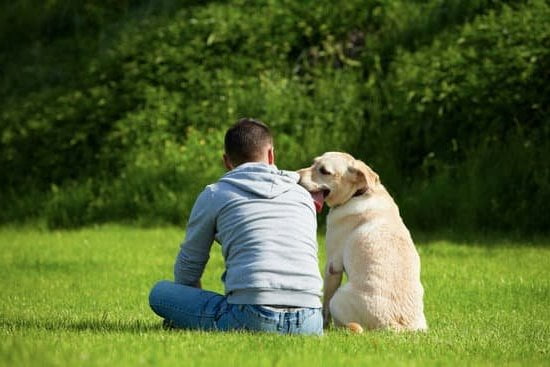Why is canine domestication and evolution relevant for dog training? Understanding the history of how dogs evolved from wolves can provide valuable insights into their behavior and instincts. By exploring how domestication has shaped various breeds and traits, trainers can tailor their techniques more effectively. This article delves into the impact of canine evolution on training methods, highlighting the role of genetics in behavioral modification.
The journey from wild wolves to beloved pets is a fascinating one, with significant implications for modern dog training practices. As we uncover the connections between canine domestication and training methods, we gain a deeper understanding of our furry companions’ needs and tendencies. Evolution continues to play a crucial role in shaping different breeds and their unique characteristics, influencing how we approach their education and behavior management.
By utilizing knowledge of canine evolution in training techniques, trainers can develop more efficient and successful strategies for modifying behavior. From basic commands to complex tricks, an appreciation for how dogs have evolved over time can enhance the bond between humans and their canine friends. Through case studies showcasing successful training outcomes rooted in evolutionary understanding, we see firsthand the benefits of applying this knowledge in real-world scenarios.
The History of Canine Domestication
Canine domestication is a process that dates back thousands of years, with evidence suggesting that wolves were the ancestors of modern-day dogs. The relationship between humans and wolves began as a mutually beneficial partnership, with wolves providing protection and assistance in hunting in exchange for food scraps from human settlements. Over time, this partnership evolved into closer bonds, leading to the domestication of wolves into what we now recognize as dogs.
One key aspect of understanding the history of canine domestication is recognizing the gradual changes that occurred in the behavior and appearance of these early domesticated canines. As humans selected for certain traits that were desirable for their specific needs, such as hunting or guarding, genetic variations arose within populations. This selective breeding played a crucial role in shaping the diverse range of dog breeds we see today, each with its own set of characteristics and behaviors.
This historical background is essential for dog trainers because it provides insights into the innate instincts and predispositions that different breeds may possess. By understanding the evolutionary origins of certain behaviors, trainers can tailor their methods to better suit individual dogs based on their breed characteristics and genetic makeup.
This knowledge allows trainers to develop more effective training techniques that take into account not only the breed’s history but also its unique traits and tendencies. Ultimately, this understanding of canine domestication and evolution is relevant for dog training because it enables trainers to work with a dog’s natural instincts rather than against them, fostering a more successful and harmonious training experience.
The Impact of Domestication on Canine Behavior and Instincts
Domestication has played a crucial role in shaping canine behavior and instincts over thousands of years. Through the process of selective breeding and living closely with humans, dogs have developed unique traits that distinguish them from their wild ancestors, wolves. One key aspect of this transformation is the strong bond that dogs have formed with humans, leading to their reputation as loyal companions.
An important factor to consider when understanding the impact of domestication on canine behavior is the concept of socialization. Dogs that have been properly socialized from a young age tend to exhibit more desirable behaviors such as friendliness towards people and other animals. This highlights the significance of early interactions in shaping a dog’s temperament and overall demeanor.
Additionally, domestication has also influenced dogs’ instincts in terms of problem-solving, communication, and adaptation. For example, working breeds like Border Collies have retained their herding instincts, which can be observed through their natural ability to control the movement of livestock.
Understanding these innate tendencies is crucial for effective dog training techniques that are tailored to each breed’s specific needs and characteristics. This is why canine domestication and evolution are relevant for dog training practices, as they provide essential insights into how best to communicate and work with our canine companions.
| Aspect | Impact |
|---|---|
| Socialization | Dogs develop friendliness towards people and animals through proper early interactions. |
| Instincts | Dogs’ problem-solving skills and adaptation abilities are influenced by domestication. |
How Evolution Shapes Dog Breeds and Traits
Evolution has played a significant role in shaping the various dog breeds and traits that we see today. Through the process of natural selection and selective breeding by humans, dogs have developed a wide range of physical characteristics, behaviors, and instincts that make them unique from one another. Understanding how evolution has influenced these qualities is crucial for effective dog training.
One key aspect of how evolution shapes dog breeds and traits is through genetic variations. Different breeds have been selectively bred over generations to emphasize specific traits that were desirable for certain functions such as herding, hunting, guarding, or companionship. These genetic variations not only determine physical appearance but also play a role in behavior tendencies such as temperament, energy levels, and trainability.
When considering why canine domestication and evolution are relevant for dog training, it is important to recognize that each breed comes with its own set of predispositions based on their evolutionary history. For example, herding breeds may have a strong instinct to chase moving objects due to their background in guiding livestock. Understanding these breed-specific traits can help trainers tailor their methods to suit the individual needs of each dog, ultimately leading to more successful training outcomes.
| Aspect | Relevance |
|---|---|
| Genetic Variations | Play a role in behavior tendencies and trainability. |
| Breed-Specific Traits | Help trainers tailor methods to suit individual needs for successful training outcomes. |
The Connection Between Canine Domestication and Training Methods
Canine domestication and evolution play a crucial role in shaping modern dog training methods. By understanding the history of how dogs have evolved from wolves and been domesticated over centuries, trainers can better grasp the behavior and instincts of their canine companions. This knowledge allows them to tailor training techniques that are not only effective but also respectful of the natural tendencies of dogs.
The Importance of Understanding Canine Behavior
It is essential for trainers to recognize that while dogs have been domesticated, they still retain many behaviors and instincts inherited from their wolf ancestors. Understanding why certain behaviors, such as pack mentality or predatory instinct, are ingrained in dogs can help trainers develop training methods that work with these instincts rather than against them. For example, incorporating socialization activities to fulfill the pack mentality can lead to a more well-rounded and socialized dog.
Utilizing Evolutionary Traits for Effective Training
By acknowledging how evolution has shaped different dog breeds and their specific traits, trainers can tailor their methods to suit individual needs. For instance, herding breeds may respond better to tasks that engage their natural inclination to work alongside humans, while hunting breeds may require more opportunities for scent-based activities.
Recognizing these breed-specific traits allows trainers to capitalize on a dog’s natural abilities, making the training process more enjoyable and successful for both the trainer and the dog.
Overall, by incorporating knowledge of canine domestication and evolution into dog training practices, trainers can create more effective and compassionate training methods. This understanding enhances the bond between human and canine, leading to better communication, mutual respect, and ultimately well-behaved companions. It is through recognizing these deep-rooted connections between our modern-day pets and their ancestral past that we can truly unlock the potential for successful dog training experiences.
Utilizing Canine Evolution for Effective Training Techniques
Canine evolution has played a significant role in shaping the behavior and instincts of our furry companions, making it crucial for dog trainers to understand this process in order to effectively train dogs. By delving into how dogs have evolved from their wolf ancestors and the impact of domestication on their behaviors, trainers can tailor their techniques to accommodate these innate traits.
The Influence of Pack Mentality
One key aspect of canine evolution that is important in training is the influence of pack mentality. Dogs are social animals that have thrived through cooperative hunting and living in hierarchical packs. Understanding this evolutionary trait can help trainers utilize pack dynamics to establish leadership roles within training sessions. By tapping into this instinctual behavior, trainers can effectively communicate with dogs and encourage desired behaviors.
Instinctual Behaviors and Training
Another essential aspect of utilizing canine evolution for training techniques is recognizing the instinctual behaviors that have been ingrained in dogs through thousands of years of evolution. For example, the prey drive inherited from wolves influences chasing behaviors, which can be redirected towards games like fetch or agility courses. By acknowledging these instincts and channeling them appropriately, trainers can engage dogs in activities that satisfy their natural tendencies while reinforcing positive behaviors.
Adapting Training Methods
By incorporating an understanding of canine evolution into training methods, trainers can adapt their approaches based on breed-specific traits and behavioral tendencies. For instance, herding breeds may exhibit strong instincts to chase or corral due to their historical roles as working dogs.
Tailoring training exercises that engage these instincts in a constructive manner can result in more successful outcomes. Recognizing how evolutionary factors have shaped different breeds allows trainers to develop personalized strategies that align with each dog’s unique characteristics for more effective training results.
The Role of Genetics in Dog Training
Genetics plays a crucial role in dog training as it influences a dog’s behavior, temperament, and ability to learn. Understanding the genetic makeup of different breeds can provide valuable insights into their natural instincts and behaviors, which can ultimately help in tailoring training methods to suit individual dogs. For example, herding breeds like Border Collies may have a strong instinct to chase and control moving objects due to their genetic predisposition for herding livestock.
Moreover, genetics also play a role in determining a dog’s intelligence, trainability, and problem-solving skills. Breeds like German Shepherds and Poodles are known for their high intelligence and trainability, making them quick learners when it comes to obedience training or complex tasks. On the other hand, breeds like Basenjis may be more independent and stubborn due to their primitive heritage, requiring a different approach to training that takes into account their genetic predispositions.
By understanding the role of genetics in dog training, trainers can better recognize and address behavioral issues that may arise as a result of breed-specific characteristics. This knowledge can also help in creating personalized training plans that take into consideration each dog’s unique genetic makeup and tendencies. Ultimately, leveraging genetics in dog training can lead to more effective results and stronger bonds between dogs and their owners.
Applying Knowledge of Canine Evolution in Behavioral Modification
Canine evolution has played a crucial role in shaping the behavior and instincts of dogs, making it essential to understand how domestication has influenced their abilities and tendencies. By delving into the genetic and behavioral changes that occurred during canine domestication, trainers can develop more effective methods for modifying behavior in their canine companions. This knowledge not only provides insights into why dogs behave the way they do but also offers valuable cues on how to address specific behavioral issues.
When applying knowledge of canine evolution in behavioral modification, trainers can utilize various techniques that align with a dog’s natural instincts and tendencies. By acknowledging the impact of domestication on a dog’s social structure and hierarchy, trainers can establish themselves as pack leaders in a way that resonates with their canine counterparts. Incorporating evolutionary principles into training methods helps create a harmonious relationship between humans and dogs based on mutual understanding and respect.
To effectively modify behavior through an understanding of canine evolution, trainers can implement the following strategies:
- Utilizing positive reinforcement techniques that align with a dog’s instinctual drive for rewards
- Incorporating activities that tap into a dog’s innate behaviors, such as scent work or herding simulations
- Recognizing breed-specific traits shaped by evolution and tailoring training approaches accordingly
By integrating these strategies based on an understanding of canine domestication and evolution, trainers can optimize their efforts in modifying behavior effectively while strengthening the bond between humans and their canine companions.
Case Studies
Understanding the evolution and domestication of canines is crucial for modern dog training practices. By examining how dogs have evolved from wolves and how domestication has influenced their behavior and instincts, trainers can better understand how to effectively communicate with and train their canine companions. This knowledge provides valuable insights into why certain training methods are more successful than others and allows trainers to tailor their approach based on a dog’s breed or individual characteristics.
To highlight the significance of canine domestication and evolution in dog training, here are some success stories from case studies that showcase the benefits of incorporating this understanding into training techniques:
- Case Study 1: Understanding the pack mentality – By recognizing that dogs have inherited social structures from their wolf ancestors, trainers can utilize this knowledge to establish themselves as leaders in the pack. This can help create a stronger bond between trainer and dog, leading to more effective training outcomes.
- Case Study 2: Breed-specific training methods – Different dog breeds have been selectively bred for specific traits over centuries, which can influence their learning styles and behaviors. By considering these breed-specific characteristics in training, trainers can tailor their approach to better suit the needs of each individual dog.
- Case Study 3: Instinctual behavior modification – Dogs retain many instinctual behaviors from their wild ancestors, such as prey drive or herding instincts. Understanding these instincts can help trainers redirect or modify unwanted behaviors effectively, leading to more successful training results.
Overall, these case studies demonstrate how a deeper understanding of canine domestication and evolution can significantly impact the success of dog training. By incorporating this knowledge into training methods, trainers can create a more harmonious relationship with their canine companions based on mutual respect and effective communication.
Conclusion
In conclusion, understanding canine domestication and evolution is crucial for effective dog training practices. By delving into the history of how wolves evolved into dogs through domestication, we can gain insights into their behavior and instincts. This knowledge provides a foundation for developing training methods that work with the natural tendencies and traits of different dog breeds.
Evolution plays a significant role in shaping the physical and behavioral characteristics of various dog breeds. By recognizing how evolution has influenced certain traits in dogs, trainers can tailor their approaches to suit the specific needs of each breed. For example, herding breeds may have retained instincts related to their historical roles as working animals, while hunting breeds may exhibit prey drive behaviors due to their evolutionary history.
Overall, applying an understanding of canine domestication and evolution in modern dog training practices is essential for not only addressing behavioral issues but also fostering a strong bond between dogs and their owners. By utilizing this knowledge, trainers can develop more effective techniques that take into account the innate instincts and genetic predispositions of individual dogs.
Ultimately, by embracing our canine companions’ evolutionary past, we can enhance the success of training programs and create happier, well-adjusted dogs in our homes.
Frequently Asked Questions
How Does Evolution Contribute to Domestic Canine Behaviour?
Evolution contributes to domestic canine behavior by shaping their physical and behavioral traits over generations. Traits that were advantageous for survival in the wild have been modified through selective breeding to suit human needs. This evolutionary process has influenced behaviors such as social interactions, communication, and problem-solving skills in domestic dogs.
Why Was the Domestication of Dogs Important?
The domestication of dogs was important for several reasons. It provided humans with companionship, security, hunting assistance, and even emotional support.
Dogs played a crucial role in early human civilizations by aiding in tasks like herding livestock, guarding settlements, and providing warmth during cold nights. The bond between humans and dogs has deep historical roots and continues to be cherished today.
What Impact Does Domestication Have on Dogs?
Domestication has had a significant impact on dogs both physically and behaviorally. Physically, domestic dogs have undergone changes such as reduced size variations compared to their wild ancestors, altered coat colors, and differences in skull shapes depending on their breeds.
Behaviorally, domestication has led to the development of complex social behaviors geared towards interacting harmoniously with humans and other animals. Dogs have learned to interpret human cues, cooperate with people, and form strong emotional bonds with their owners that are unique among animal species.

Welcome to the blog! I am a professional dog trainer and have been working with dogs for many years. In this blog, I will be discussing various topics related to dog training, including tips, tricks, and advice. I hope you find this information helpful and informative. Thanks for reading!





